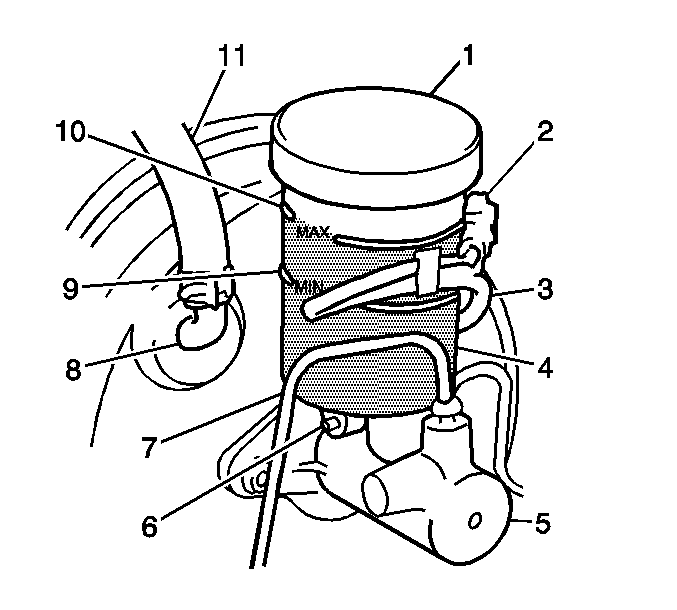For 1990-2009 cars only
Removal Procedure
Caution: Refer to Brake Fluid Irritant Caution in the Preface section.
Notice: Refer to Brake Fluid Effects on Paint and Electrical Components Notice in the Preface section.
- Disconnect the reservoir fluid level connector (2).
- Clean the reservoir and the master cylinder.
- Remove the reservoir. Refer to Master Cylinder Reservoir Replacement .
- If the vehicle has ABS, disconnect the brake pipes (1,4) from the proportioning valve (3).
- Disconnect the brake pipes from the master cylinder.
- Remove the nuts that retain the master cylinder to the brake booster.
- If the vehicle does not have ABS, remove the master cylinder from the brake booster.
- If the vehicle has ABS, separate the proportioning valve from the master cylinder. Refer to Proportioning Valve Replacement .
- Disassemble, inspect, and reassemble the master cylinder, if necessary. Refer to Master Cylinder Overhaul .


If the vehicle has ABS, remove the master cylinder with the proportioning valve from the brake booster.
Installation Procedure
- Adjust the booster piston rod. Refer to the Adjustment Procedure in Power Vacuum Brake Booster Replacement .
- Bench bleed the master cylinder. Refer to Master Cylinder Bench Bleeding .
- If the vehicle has ABS, install the proportioning valve to the master cylinder. Refer to Proportioning Valve Replacement .
- Install the master cylinder (5) and the 2 nuts to the brake booster.
- Connect the brake pipes.
- Install the reservoir. Refer to Master Cylinder Reservoir Replacement .
- Connect the reservoir fluid level connector.
- Fill the reservoir. Refer to Master Cylinder Reservoir Filling .
- Bleed the hydraulic brake system. Refer to Hydraulic Brake System Bleeding .
- Inspect the hydraulic brake system for leaks. Refer to Brake System External Leak Inspection .
- Inspect the brake pedal travel. Refer to Brake Pedal Travel Measurement and Inspection .
- Perform the brake system vehicle road test. Refer to Brake System Vehicle Road Test .
Notice: Refer to Fastener Notice in the Preface section.

Tighten
Tighten the nuts to 13 N·m (115.1 lb in).
Tighten
Tighten the flare nuts to 16 N·m (11.8 lb ft).
